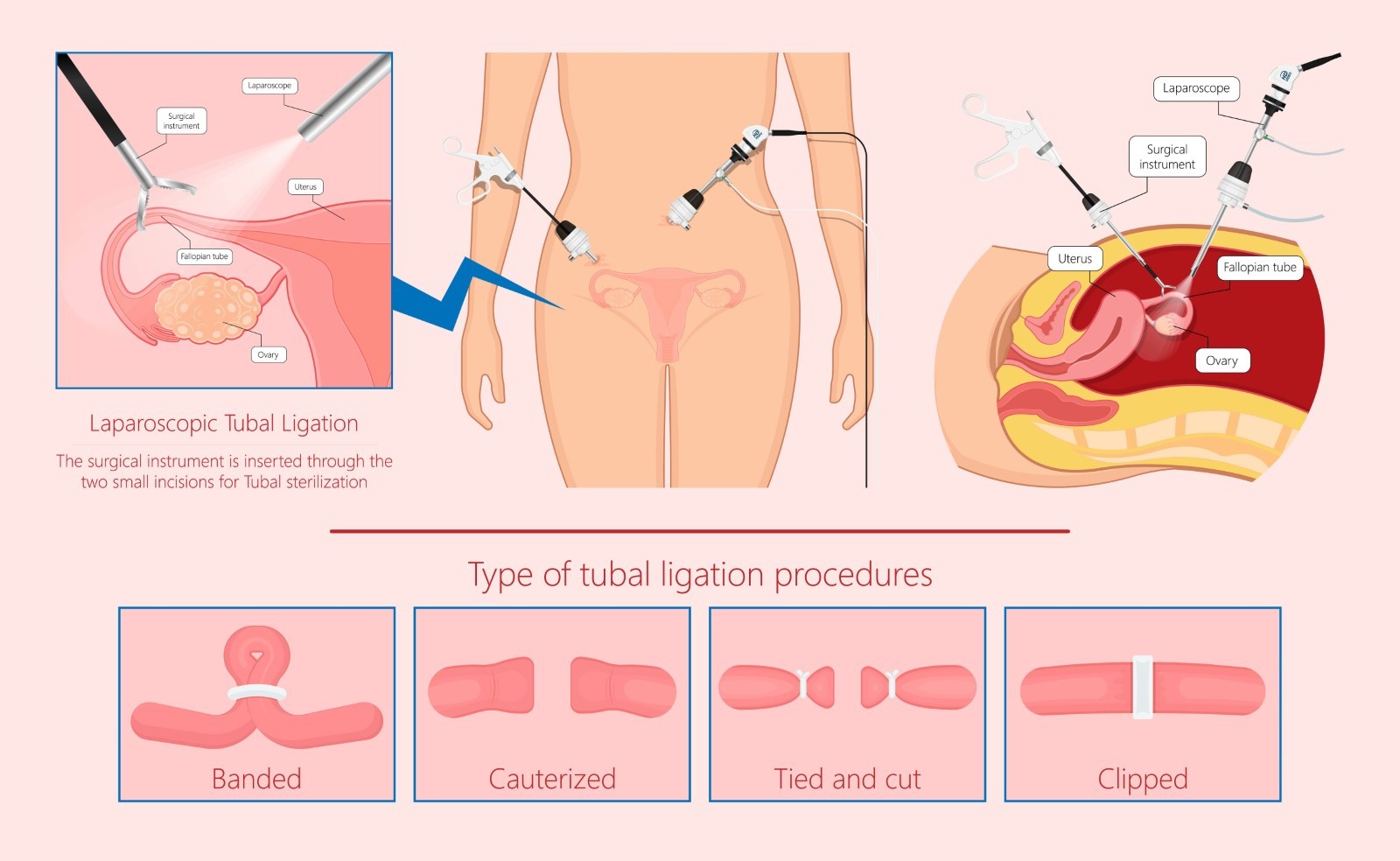Getting to know about laparoscopic tubal ligation can be an eye-opener for many women considering permanent birth control. This minimally invasive surgical procedure is gaining popularity owing to its convenience and safety. In recent years, more women have opted for this modern surgical option over traditional methods, as it ensures minimal discomfort.
The procedure uses small incisions, resulting in quicker recovery and lesser scarring. For those witnessing traditional surgeries, this is a significant improvement. The smaller cuts heal faster, enabling a swift return to normal activities. When exploring laparoscopic tubal ligation benefits, a faster healing process tops the list.
Women value the autonomy this procedure offers. With laparoscopic tubal ligation, future pregnancies are prevented permanently, empowering women in making crucial reproductive choices confidently. It shows a strong bias towards modern tools that fit well with contemporary lifestyles.
Moreover, the procedure is versatile, giving women the freedom to focus on career or family priorities without worrying about contraception. Its benefits align well with busy lifestyles. For those contemplating the option, laparoscopic tubal ligation procedure offers a reliable solution in today’s fast-paced world.
In conclusion, choosing laparoscopic tubal ligation is about modern lifestyles and informed choices. It is seen as a step forward in reproductive autonomy. Considering these gains, many women feel more in control of their reproductive health. The drive towards minimally invasive procedures continues to grow.
Risks, Considerations, and Recovery Insights
While the benefits are apparent, it’s essential to understand laparoscopic tubal ligation risks. Every surgical procedure carries potential risks, albeit minimal in this case. However, being aware of possible complications can aid better decision-making.
Risks can include infections, bleeding, or reactions to anesthesia, just like any surgery. Generally, though, this procedure is safe and is preferred over more invasive surgeries such as open tubal ligation. Comparing this to traditional methods, the laparoscopic tubal ligation procedure has fewer side effects, which adds to its appeal.
When contemplating this procedure, personal and cultural contexts are crucial. In places like India, family views on permanent birth control can vary widely. It’s vital for women to consider societal perspectives and family dynamics when making such decisions.
As for laparoscopic tubectomy recovery time, it’s relatively swift. Most women can return to regular activity within a week. Tips for smooth recovery include:
- Resting adequately in the initial days.
- Avoiding heavy lifting and intense exercise.
- Following your doctor’s advice on wound care.
Understanding laparoscopic tubal ligation side effects can help in setting realistic expectations. Mild discomfort, slight pain, or shoulder pain from gas used in surgery might occur. However, these usually resolve quickly and are part of the recovery process.
In essence, armed with knowledge about laparoscopic tubal ligation risks and a clear recovery path, women can confidently approach this procedure. The emphasis is on making a choice that complements one’s lifestyle and family plans.
Success Rates, Myths, and Women’s Health Trends
When assessing the laparoscopic tubal ligation success rate, statistics reveal an impressive record. Not only in India but globally, the success rates are above 99%. This makes it one of the most reliable forms of permanent contraception.
There are, however, prevalent myths about this procedure that concern many women. Some believe it affects hormonal health or sexual enjoyment, but these are just misconceptions. Clearing up these myths is vital, as misinformation can impact informed choices.
Listening to testimonials can be illuminating. Many women have reported positive experiences, highlighting how it didn’t alter their daily life or health negatively. It’s reassuring to know that other than preventing pregnancies, it doesn’t interfere with your body’s functioning.
The relevance of laparoscopic tubal ligation aligns with emerging trends in women’s health and empowerment. Women today are making proactive health choices, and wanting control over reproductive decisions is at the forefront. As healthcare advances, more women are seeking autonomy and reliable methods like this.
In summary, the laparoscopic tubal ligation success rate is uncompromisingly high. By dispelling myths and understanding real outcomes, more women feel empowered to make such decisions. It promotes a strong narrative of women leading their health choices in line with modern demands.
Conclusion and Encouragement for Autonomous Health Decisions
Throughout this exploration of laparoscopic tubal ligation, its benefits and minimal risks stand out. This procedure is not only about preventing pregnancy but is a statement about claiming reproductive rights and making informed health decisions.
The procedure’s fusion of autonomy, minimal invasiveness, and quick recovery encourages women to consider it as a viable option. Each aspect of it caters to modern familial and lifestyle goals, reflecting a true step forward in healthcare.
Making the decision to undergo laparoscopic tubal ligation procedure should come from a place of awareness and confidence. We recommend consulting healthcare professionals and reviewing recent studies to gather all needed knowledge. Laparoscopic tubal ligation benefits should work for personal needs, fit within family plans and cultural contexts.
Referencing reliable data can aid in this decision. Research underscores the value and reliability of the procedure. Moreover, expert insights highlight its status as a milestone in women’s health.
Women today have never had more resources and support at their disposal for making such choices. By embracing such healthcare advancements, they drive a narrative emphasizing choice and autonomy. Laparoscopic tubal ligation is more than a birth control option—it’s a step towards owning your health narrative confidently.

